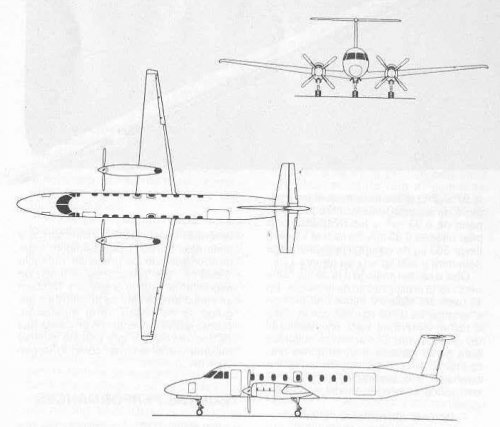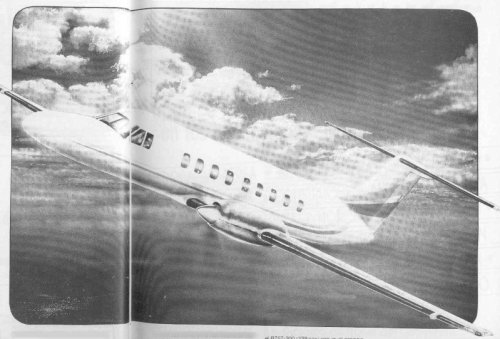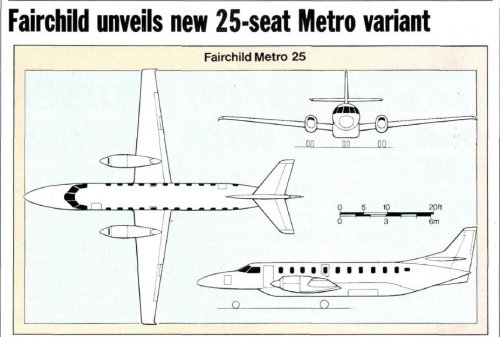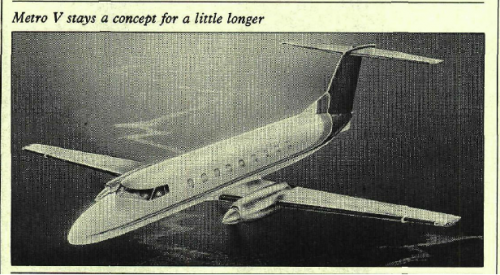Sentinel Chicken
American 71 Heavy, contact departure 126.47
I had recently come across some references that talked about possible developments Fairchild/Swearingen were looking into as future developments of the Metro/Metroliner in the late 1980s that I've never seen any other material on:
Metro V- proposed at the 1987 Paris Air Show; Metro III fuselage with longer, redesigned wings, T-tail, and more powerful Garrett engines moved out further.
Metro VI- same as Metro V, but with more powerful engines.
Stand-up cabin version- not sure where this design proposal falls, but it would have been similar to what Beech did in going from the 1900C to the 1900D. I'd never heard of this proposal at all before. One of the unflattering nicknames of the Metro referred to its slim fuselage/cramped cabin- "The San Antonio Sewer Pipe", in reference to Swearingen's facility in San Antonio, TX.
Metro V- proposed at the 1987 Paris Air Show; Metro III fuselage with longer, redesigned wings, T-tail, and more powerful Garrett engines moved out further.
Metro VI- same as Metro V, but with more powerful engines.
Stand-up cabin version- not sure where this design proposal falls, but it would have been similar to what Beech did in going from the 1900C to the 1900D. I'd never heard of this proposal at all before. One of the unflattering nicknames of the Metro referred to its slim fuselage/cramped cabin- "The San Antonio Sewer Pipe", in reference to Swearingen's facility in San Antonio, TX.




